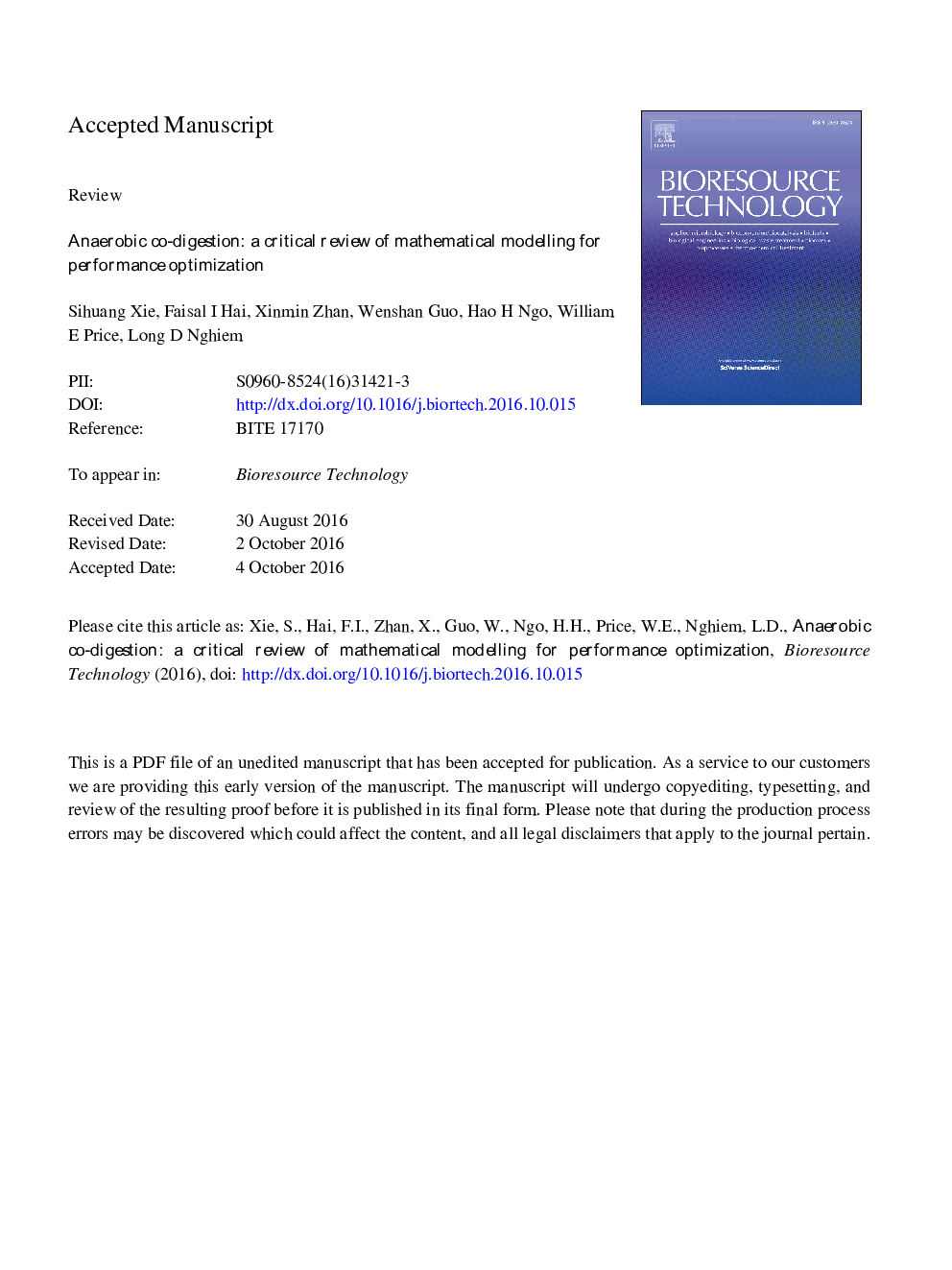| Article ID | Journal | Published Year | Pages | File Type |
|---|---|---|---|---|
| 4997965 | Bioresource Technology | 2016 | 42 Pages |
Abstract
Anaerobic co-digestion (AcoD) is a pragmatic approach to simultaneously manage organic wastes and produce renewable energy. This review demonstrates the need for improving AcoD modelling capacities to simulate the complex physicochemical and biochemical processes. Compared to mono-digestion, AcoD is more susceptible to process instability, as it operates at a higher organic loading and significant variation in substrate composition. Data corroborated here reveal that it is essential to model the transient variation in pH and inhibitory intermediates (e.g. ammonia and organic acids) for AcoD optimization. Mechanistic models (based on the ADM1 framework) have become the norm for AcoD modelling. However, key features in current AcoD models, especially relationships between system performance and co-substrates' properties, organic loading, and inhibition mechanisms, remain underdeveloped. It is also necessary to predict biogas quantity and composition as well as biosolids quality by considering the conversion and distribution of sulfur, phosphorus, and nitrogen during AcoD.
Keywords
Related Topics
Physical Sciences and Engineering
Chemical Engineering
Process Chemistry and Technology
Authors
Sihuang Xie, Faisal I. Hai, Xinmin Zhan, Wenshan Guo, Hao H. Ngo, William E. Price, Long D. Nghiem,
